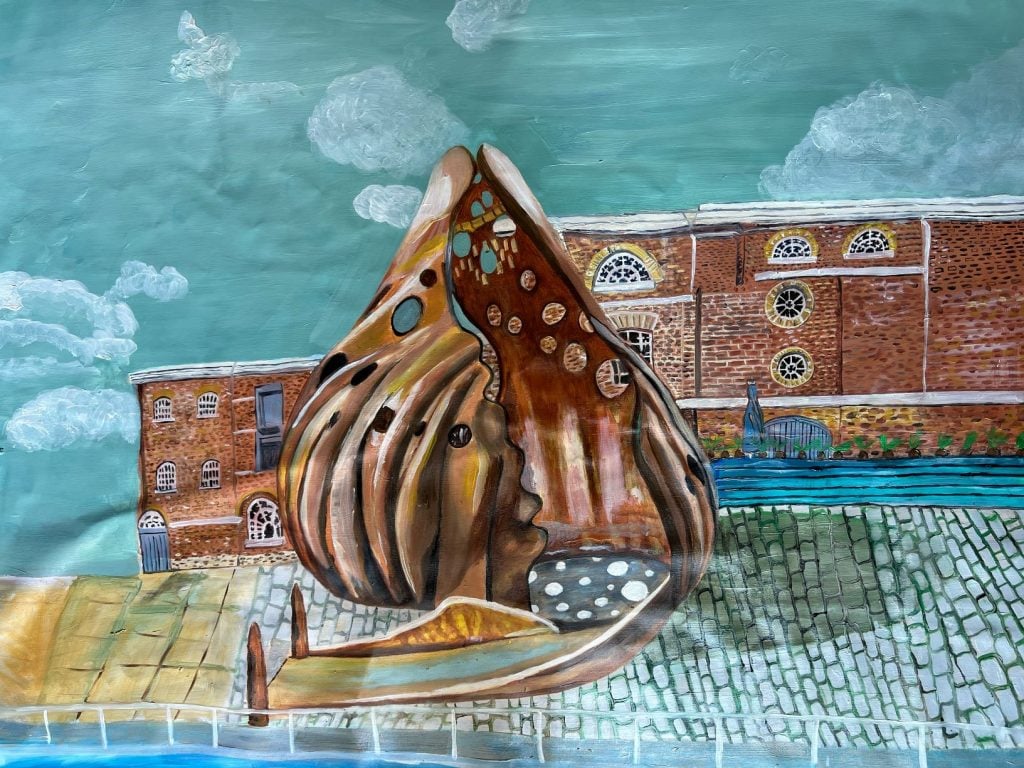In 2026, London will unveil its first memorial dedicated to the victims of the transatlantic slave trade—a 23-foot-tall bronze cowrie shell designed by the artist Khaleb Brooks. Titled The Wake, the sculpture will stand on the historically charged banks of the River Thames at West India Quay, a site once entrenched in the trade’s grim realities. This area, now poised to confront its past, was a hub for goods like sugar, which were the direct products of enslaved labor.
Chosen from a shortlist of six artists, Brooks’ design emerged as the embodiment of resilience. The cowrie shell, once a currency in Africa and a symbol of trade in human lives, now represents the perseverance of African and African diasporic heritage. Visitors will enter the memorial through two sculpted sugarloaf mounds, ascending a ramp inscribed with poetry by Yrsa Daley-Ward. Inside, the shell’s interior walls will bear the names of those who were enslaved, alongside blank spaces that acknowledge the countless others who remain nameless.
Brooks, a Chicago-born artist whose work often reflects on personal and collective memory, completed a research residency at the International Slavery Museum in Liverpool. This experience, combined with his vision of honoring those who endured the horrors of slavery, informs The Wake, which will be part of London Mayor Sadiq Khan’s Commission for Diversity in the Public Realm.

The project’s significance extends beyond the monument itself. A series of smaller shells will mark satellite sites across London, each linked to the history of the slave trade. Accompanying the memorial’s unveiling will be a year-long series of events—readings, performances, and live music—designed to engage the community in reflection and healing.
Other shortlisted proposals ranged from Alberta Whittle’s evocative pavilion and sugarcane field to Hew Locke’s poignant bronze figures, each design wrestling with the enduring legacy of a dark chapter in history. Yet, it is Brooks’ work that will stand as a testament to the complexities of memory, history, and the ongoing journey towards a more equitable future.
London’s streets are lined with echoes of its imperial past, and as this monument rises, it will serve as both a reminder and a reckoning—a place to honor the resilience of those who suffered and to reflect on a history that still shapes the present. As Brooks poignantly puts it, “We are our history.” Through this memorial, London will take a step toward acknowledging the pain of the past while embracing the potential for a more just future.







